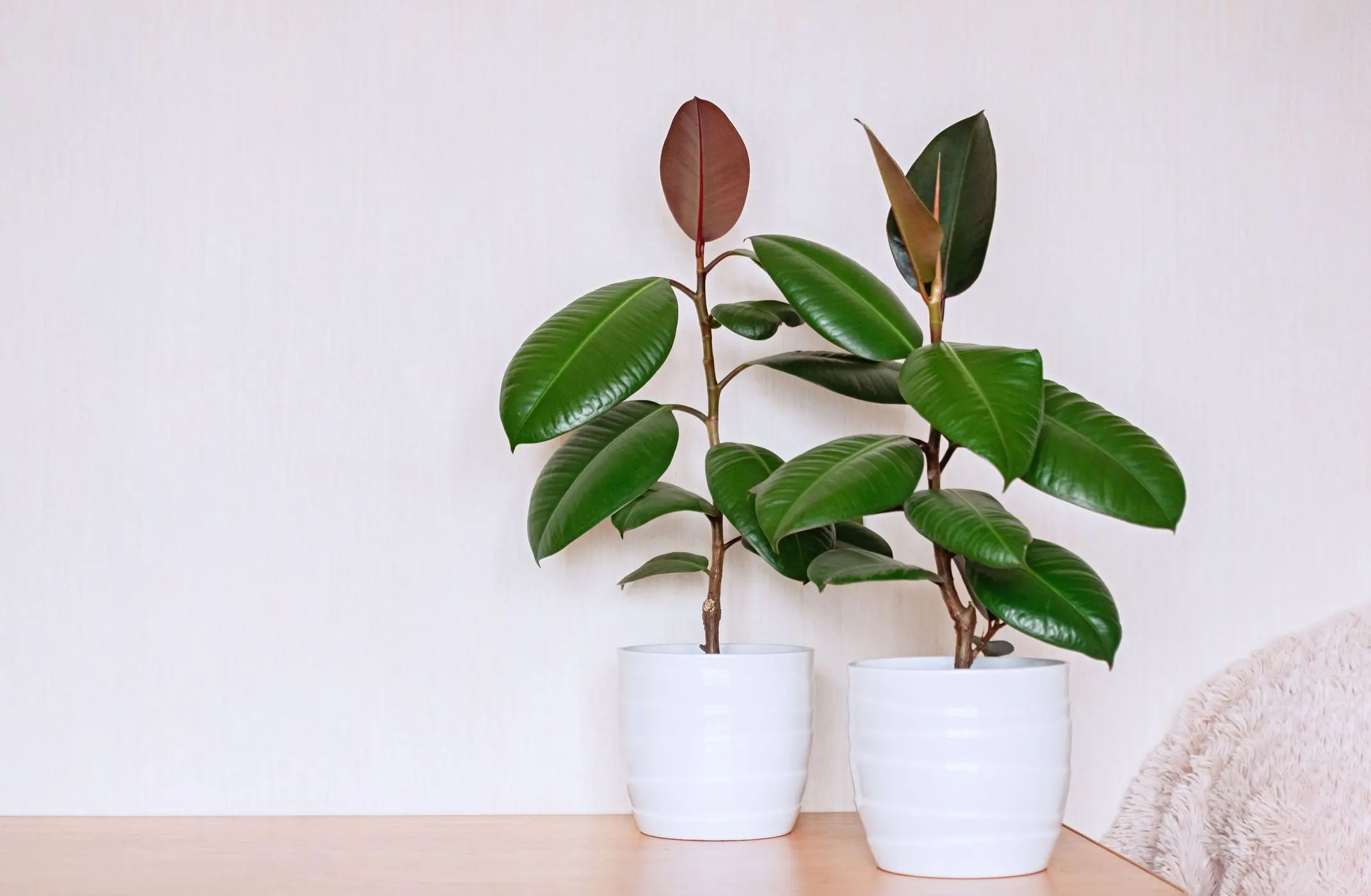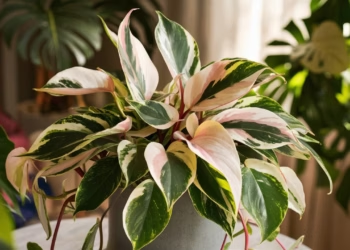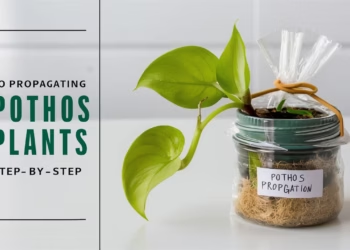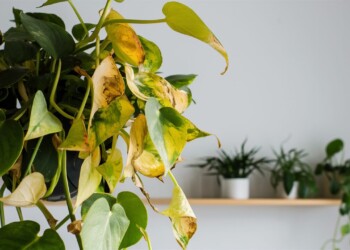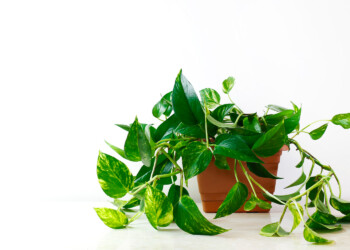So, you’ve got yourself a rubber plant! Congrats, you’re about to embark on a green journey full of growth, vitality, and a touch of elegance. But wait! Before you jump in headfirst, it’s crucial to understand the intricacies of rubber plant care .
Fear not, fellow plant parent! In this guide, we’ll delve into the nitty-gritty details of nurturing your rubber plant to ensure it flourishes and becomes the envy of all your friends. From watering woes to sunlight struggles, we’ve got you covered. So, let’s dive in and unlock the secrets to becoming a rubber plant whisperer!
Table of Contents
Understanding Rubber Plants
Rubber plants, scientifically known as ficus elastica or ficus robusta, derive their name from the milky white latex present in their veins. Originating from southern parts of Asia, these plants have a rich history dating back to 1400BC when the Mesoamerican people utilized them as a key ingredient in making bouncy balls. Furthermore, in certain regions of India, their robust roots are ingeniously utilized to create ‘living bridges’ over small rivers.
Today, rubber plants are celebrated not only for their historical significance but also for their aesthetic appeal and air-purifying properties. Whether you opt for the variegated beauty of Rob or the deep green foliage of Robin, these houseplants are sure to add a touch of sophistication to your indoor environment.

Getting Started: Choosing the Perfect Spot
Alright, let’s kick things off by finding the ideal spot for your rubber plant to bask in all its glory. Remember, these beauties love their sunlight, but not too much! Here’s what you need to keep in mind:
1. Light
Where oh where shall your rubber plant reside? Follow these tips:
Place your rubber plant in a spot with bright, indirect sunlight. Think filtered light rather than scorching rays! Avoid placing it in direct sunlight, as this can lead to scorched leaves. Nobody wants crispy leaves! Rotate your plant periodically to ensure all sides receive equal sunlight. No plant left behind!
2. Temperature
Rubber plants are like Goldilocks-they prefer their temperatures just right. Here’s the lowdown:
Keep your rubber plant in a room with temperatures ranging from 60°F to 80°F (15°C to 26°C). Nice and cozy! Avoid exposing your plant to sudden temperature fluctuations or drafts. They’re sensitive souls!
3. Humidity
Ah, humidity-the unsung hero of plant care! Here’s what you need to know:
Rubber plants thrive in moderate to high humidity levels. Think tropical paradise! Mist your plant regularly or place it near a humidifier to keep those leaves lush and happy.

Watering Woes: Hydrating Your Rubber Plant
Ah, watering-the eternal struggle of plant parents everywhere! But fear not, for we shall conquer this challenge together. Here’s how to keep your rubber plant hydrated and thriving:
1. Watering Frequency
How often should you water your rubber plant? Here’s the scoop:
Allow the top inch of soil to dry out between waterings. No soggy bottoms here! Water your plant thoroughly until water drains from the bottom of the pot, particularly during the summer months when evaporation rates are higher.. Hydration station, here we come!
2. Watering Technique
How you water your rubber plant matters! Follow these steps for success:
Water your plant at the base to avoid wetting the leaves. Nobody likes soggy bottoms! Use room temperature water to prevent shocking your plant. Say no to cold showers! However, be mindful not to overwater, as this can lead to root rot. A simple test involves checking the soil moisture by inserting your finger about three inches into the soil. If it feels dry, it’s time to water.

Ficus Elastica Care Addition Tips
1. Repotting
Due to their rapid growth, rubber plants may outgrow their containers over time. Keep an eye on root growth, especially during spring, and repot as necessary to provide ample space for root development. This promotes nutrient absorption and overall plant vigor.
2. Feeding
During the active growing season in spring and summer, supplement your rubber plant’s nutritional needs by feeding it with a diluted liquid fertilizer once a month. Since rubber plants are not heavy feeders, ensure proper dilution to prevent fertilizer burn.
3. Maintenance
Regular maintenance is key to keeping your rubber plant healthy and vibrant. Wipe the leaves with a clean cloth to remove dust and debris, allowing the plant’s pores to breathe freely. Additionally, occasional misting helps maintain leaf moisture and cleanliness.

Troubleshooting Tips: Dealing with Common Issues
Uh-oh, looks like your rubber plant is giving you some trouble. Don’t panic! We’ve got solutions to common problems right here:
1. Droopy Leaves
Oh no, why the long face, Mr. Rubber Plant? Here’s what to do:
Check the soil moisture and adjust your watering schedule if needed. Maybe it’s thirsty! Ensure your plant is getting enough light. Time for a sunbathing session!
2. Yellowing Leaves
Yellow leaves? That’s not a good look! Try these fixes:
Inspect your plant for signs of overwatering or underwatering. Balance is key! Trim off any yellow leaves to promote new growth. Out with the old, in with the new!

And there you have it, folks-your ultimate guide to rubber plant care Armed with these tips and tricks, you’ll be well-equipped to nurture your rubber plant into a thriving masterpiece. Remember, a little love and attention go a long way in the world of plant parenting. So go forth, dear reader, and let your rubber plant shine bright like the star it is!
FAQs
Do rubber plants need direct sunlight?
Rubber plants prefer bright, indirect sunlight but can tolerate some direct sunlight, especially in the morning or late afternoon. Direct sunlight for extended periods can cause leaf burn, so it’s best to place them in a location where they receive filtered or indirect light .
How do you care for a rubber plant indoors?
To care for a rubber plant indoors:
- Place it in a spot with bright, indirect light.
- Maintain a consistent temperature between 60-80°F (16-27°C) and avoid drafts.
- Water the plant when the top inch of soil feels dry, ensuring proper drainage to prevent root rot.
- Fertilize during the growing season (spring and summer) with a balanced liquid fertilizer diluted to half strength.
- Prune to control growth and remove any damaged or yellowing leaves.
- Clean the leaves occasionally to remove dust and allow better light absorption.
How often should you water a rubber plant?
Water a rubber plant when the top inch of soil feels dry to the touch. Typically, this means watering every 1-2 weeks, but frequency may vary depending on factors like temperature, humidity, and light conditions. Avoid overwatering, as this can lead to root rot, and ensure proper drainage in the pot.
Is rubber plant indoor or outdoor?
Rubber plants are primarily indoor plants, although they can be placed outdoors in mild climates as long as they are protected from direct sunlight and extreme temperatures.
Can I put my rubber plant outside?
Yes, you can place your rubber plant outside in mild climates as long as you provide it with the appropriate conditions. Ensure it is placed in a shaded or partially shaded area to protect it from direct sunlight and strong winds. Monitor the temperature and weather conditions to prevent any damage to the plant.
Where is the best place to keep a rubber plant?
The best place to keep a rubber plant indoors is near a window with bright, indirect light. Avoid placing it in direct sunlight or dark corners. Additionally, ensure the room temperature remains consistent, and the plant is protected from drafts. A well-draining potting mix and occasional fertilization during the growing season will also promote healthy growth.
